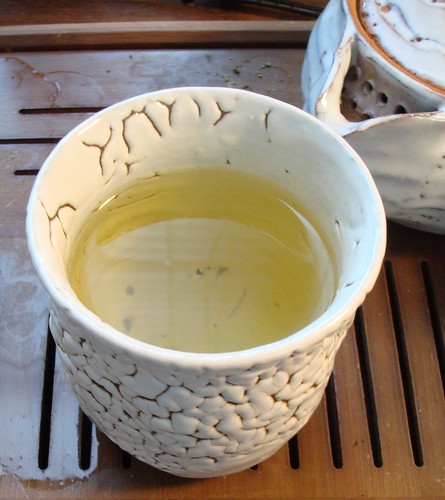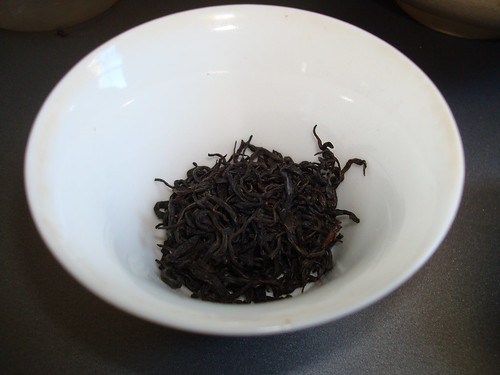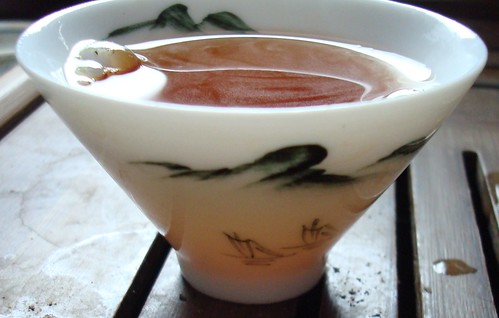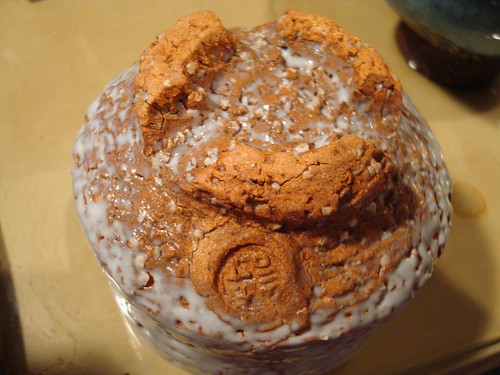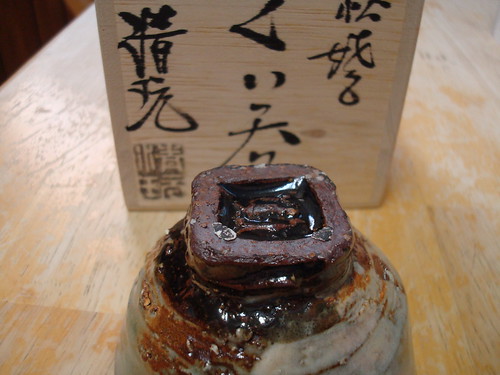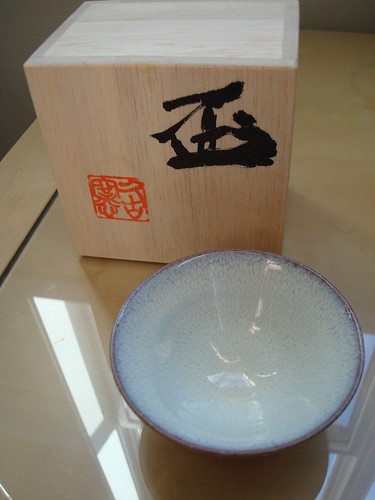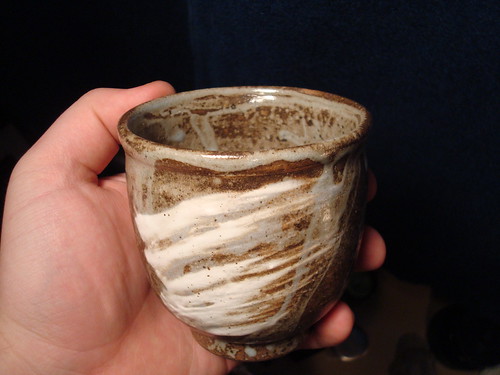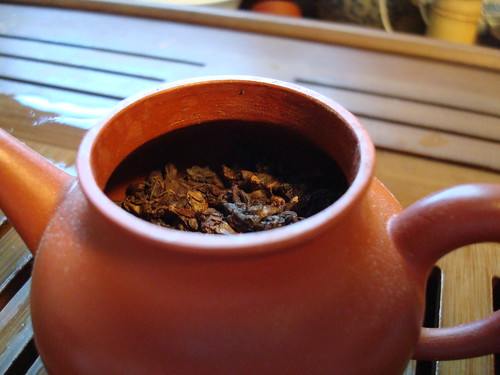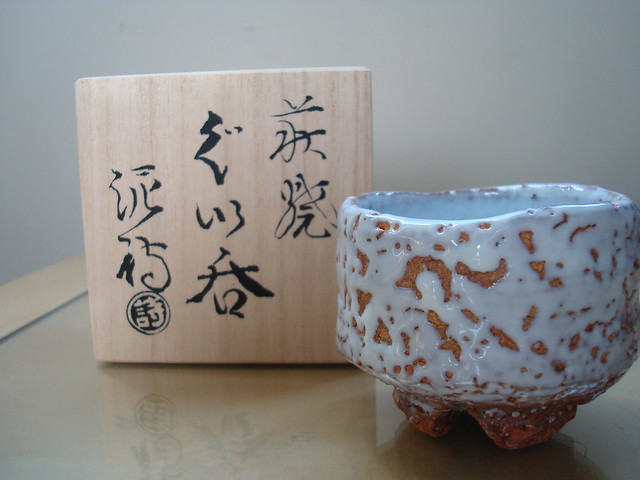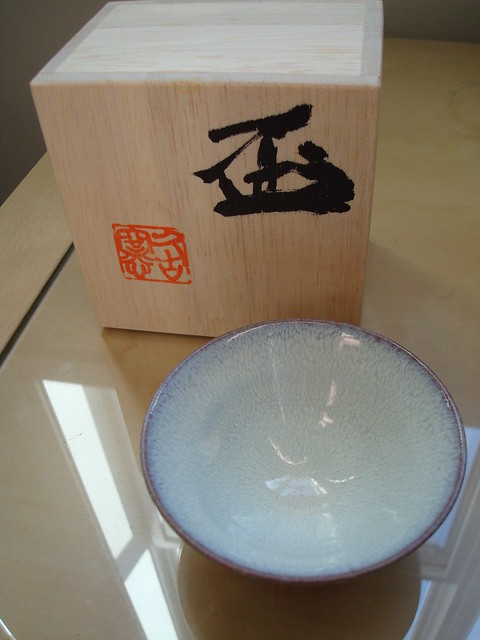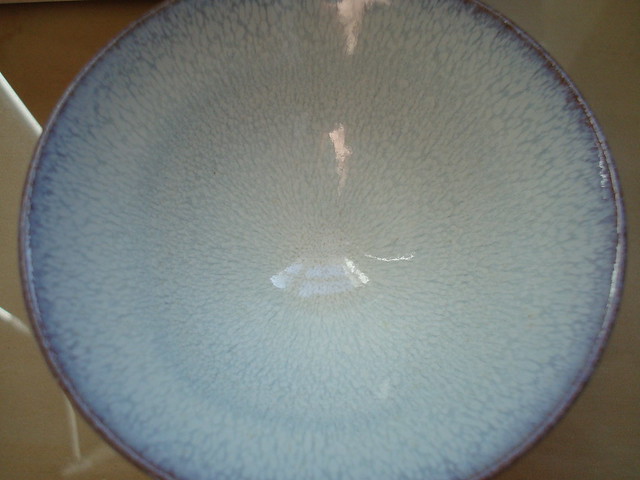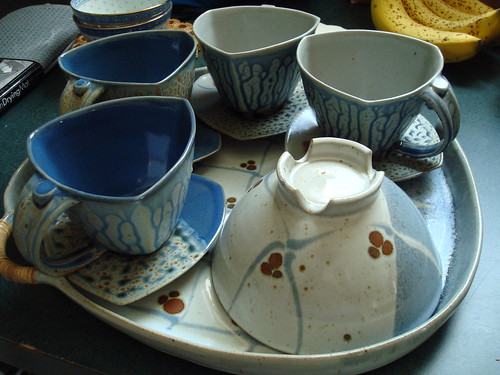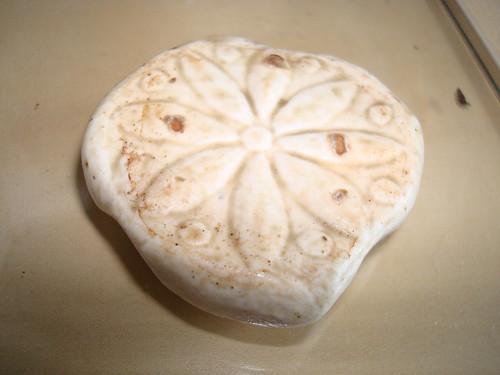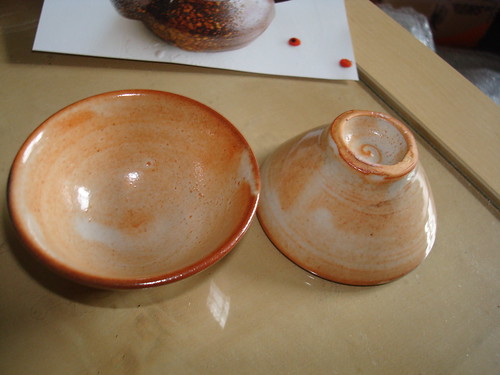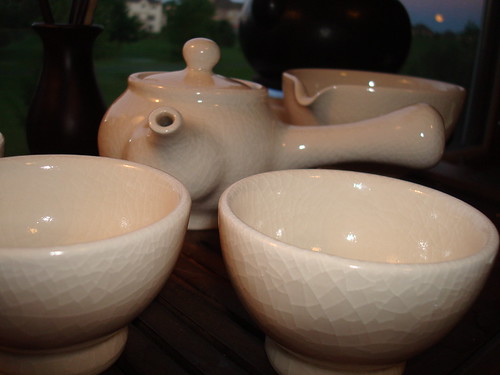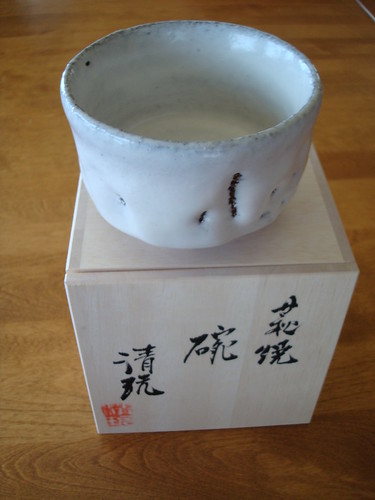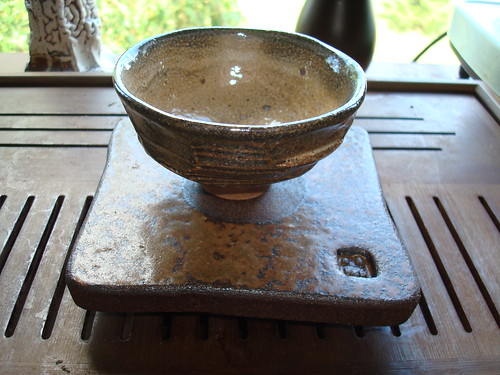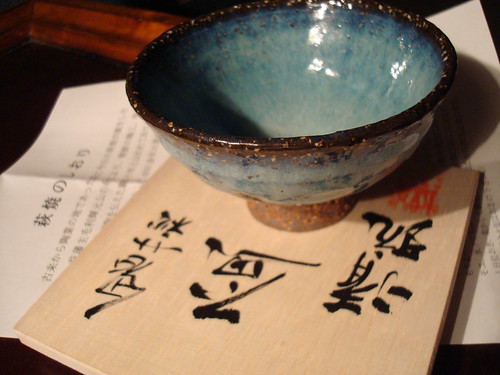So while I run the site
The Hagi Project, which catalogs my ceramics collection of Asian influence. I have long since thought about creating a collection of pieces which I would not use, and when I have the means, display it in an interesting fashion in a noticeable location. This has lead to me doing quite a bit of window shopping through many galleries trying to decide what may be collection worthy for my "Museum Gallery."
It has lead me to realize that there are no hidden deals in Japanese Ceramics, and especially by the means available to someone who probably will not travel to Japan for some time. So that being said I recently acquired two pieces that upon open I was so incredibly taken with them that I thought of starting a museum collection with these two pieces.
This post is a bit of a musing on why I am not sure either piece will be put into such a collection, after staring at the pieces for quite some time in spare time or when I needed a bit of a break in my studies. I will say that I find ceramics so incredibly calming, and wonderful to admire that they often make for a great 5-10 minute study break to examine the pieces.
First off is a Hagi Guinomi, bought under the initial impression of using it for Gyokuro. It is a Straw Ash Glaze ( Shira), and even though I've held the piece in person, it was not until a lot of people looked at the photo and commented on blue, only to have me try and explain reasons why it appears blue such as a sunny day with nice blue sky, a blue curtain located near by, and I do not know if it was power of suggestion, or if it has some special character that really makes it look blue in slightly diffused lighting. I am thinking of trying to create a Light box to take pictures at a closer to Studio Quality.
Upon its arrival I was incredibly taken with this piece, but the more and more it dawned on me, there is a very specific reason why that side of the cup is facing forward in the photo. While the rest of the cup is by no means bad in terms of glaze effects, I would have to the other three quarters of this piece has glazing which is just average in terms of appearance and effects for the artist Deishi Shibuya. But this quarter of the piece, it is exceptional the play between the brown clay body and its incredibly rough texture in stark contrast to smooth but lumpy white glaze, in a nearly random pattern gives a truly wonderful effect on the piece.
So the more I thought about it the more I realized that should I create such a collection after a few years of acquiring pieces whether they be for use or such a "museum collection" eventually I would arrive at the realization that this piece is not that special, as 1/4 is a far way from completely, though I will say that the shape and clay work to make the body are also good to great, maybe not exceptional but certainly above average compared to the other pieces of his that I have.
This piece is incredibly stunning, and it is the first time I have ever seen such an oilspot effect based on a white glaze. This piece was acquired for use with Chinese Teas, though it is actually a Sakazuki which is a flatter shaped cup for drinking Sake.
This one I am still slightly in the air about but my current reservations revolve around the fact that while this is a stunning glaze, and wonderfully formed ( seemingly almost to perfection) with actually a wonderfully tactile clay body, I realized that every time I pick up this Sakazuki to examine, I spend less than a minute examining the clay exposed in the foot, and basically the rest of the time staring into the bowl of the cup. Which while it is a stunning glaze runs into the problem of actually becoming boring after less than 5 minutes of looking it over, and seemingly shorter and shorter times subsequently.
For example look over this picture and while it is stunning at a glance, you will realize you tire of it somewhat quickly.
And the glaze on the outside of the sakazuki is a standard white glaze that I have had little motivation to study again after the first two or three times looking over the piece.
The more I think about it, especially after writing this up, I am almost certain I will put it into use, and therefore not have it be part of a theoretical "museum collection."


